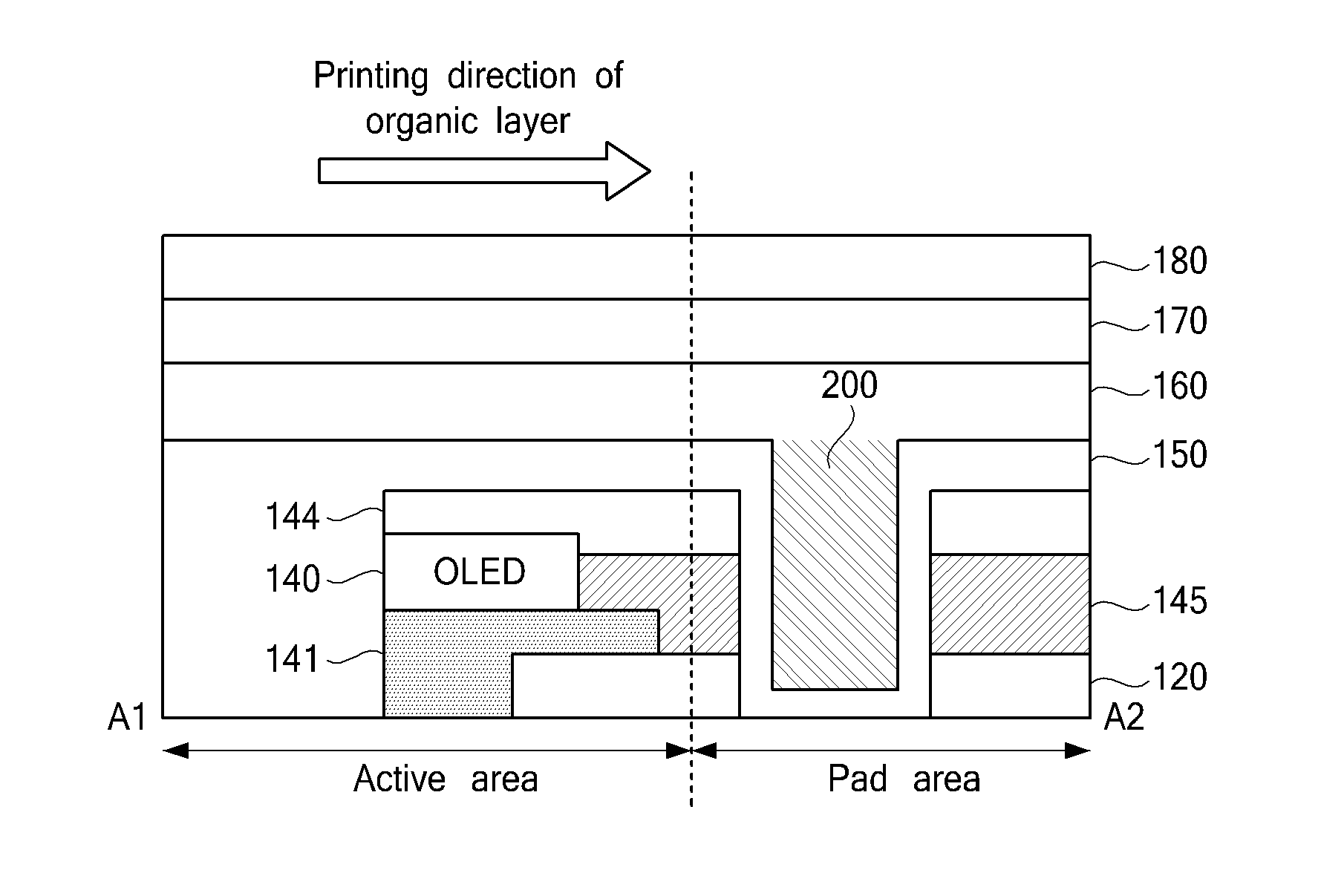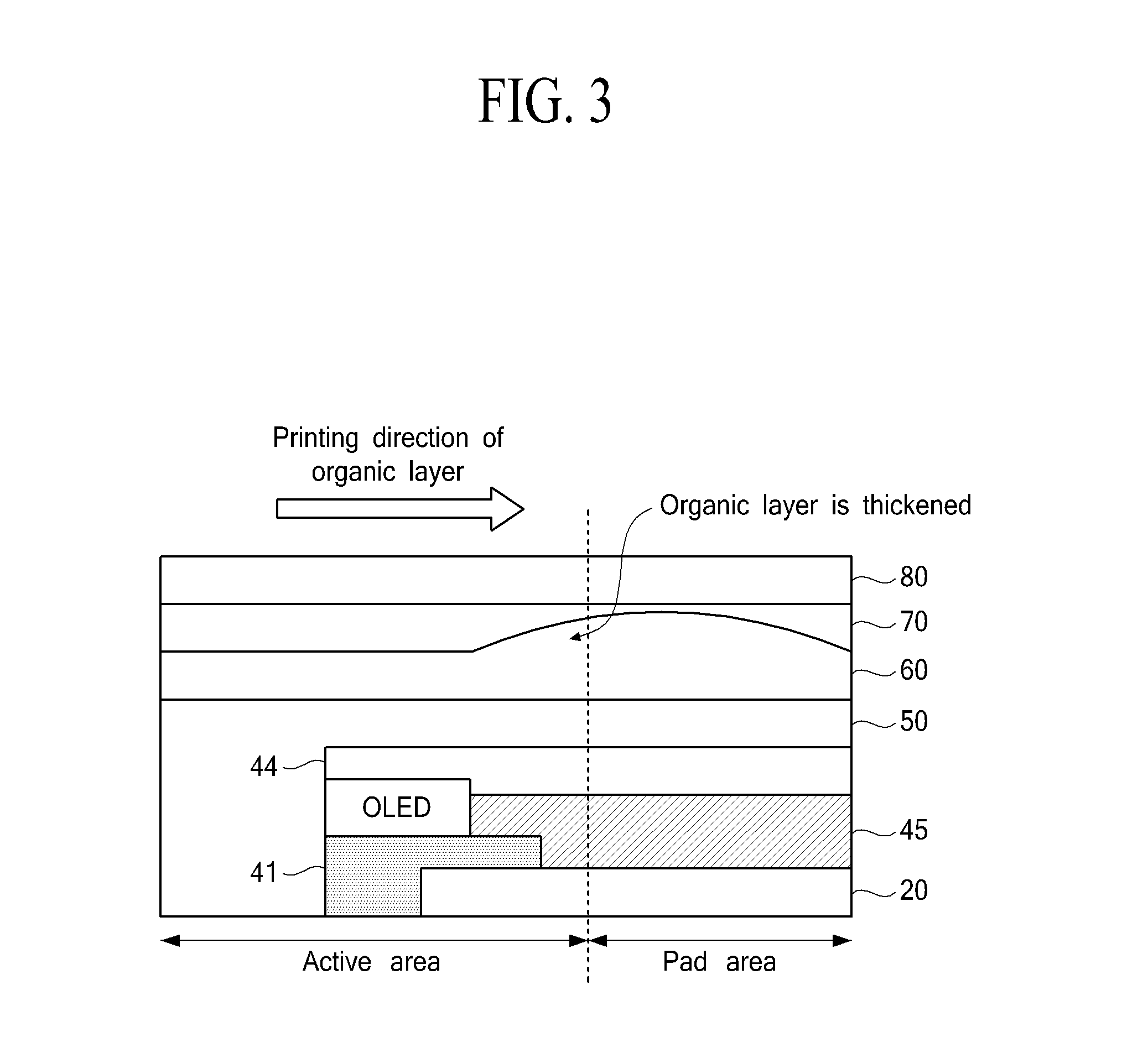Organic Light Emitting Device
a light-emitting device and organic technology, applied in the direction of thermoelectric device junction materials, semiconductor devices, electrical apparatus, etc., can solve the problems of brightness and contrast limitations, and achieve the effect of preventing a smear
- Summary
- Abstract
- Description
- Claims
- Application Information
AI Technical Summary
Benefits of technology
Problems solved by technology
Method used
Image
Examples
first embodiment
[0057]When the second protective layer 160 formed of an organic layer is thickly formed at an edge of the active area, an edge top can occur. In the organic light emitting device according to the present invention, the dam 200 is formed at a boundary between the active area and the pad area 110 so as to prevent the edge top from occurring. The dam 200 is formed to surround the active area. In the organic light emitting device according to the first exemplary embodiment, the second protective layer 160 is thereby not thickly formed at an edge of the active area, and prevents the edge top from occurring.
[0058]Here, the planarization layer 120 is formed to a thickness of 2 μm to 3 μm, and a bank 145 is formed to a thickness of 1 μm to 2 μm. The dam 200 is formed so that the planarization layer 120 and the bank 145 are not formed at the edge of the active area in a manufacturing process.
[0059]The dam 200 is formed with a groove at a portion that is separated from an outer portion of the...
second embodiment
[0071]When the second protective layer 160 formed of an organic layer is thickly formed at an edge of the active area, an edge top can occur. In the organic light emitting device according to the present invention, the dam 200 is formed at a boundary between the active area and the pad area so as to prevent the edge top from occurring.
[0072]Here, the planarization layer 120 is formed to a thickness of 2 μm to 3 μm, and a bank 145 is formed to a thickness of 1 μm to 2 μm. The dam 200 is formed so that the planarization layer 120 and the bank 145 are not formed at the edge of the active area in a manufacturing process.
[0073]As shown in FIG. 7A, a bank 145 is thickly formed at a first side (a left side of FIG. 6) of the edge of the active area. In this case, the bank 145 is thickly formed to a thickness of 4 μm to 6 μm, at a portion in which printing of the organic layer is started. When a bank is formed on the bank 145 in the pad area, the bank can prevent penetration of moisture from...
PUM
 Login to View More
Login to View More Abstract
Description
Claims
Application Information
 Login to View More
Login to View More - R&D
- Intellectual Property
- Life Sciences
- Materials
- Tech Scout
- Unparalleled Data Quality
- Higher Quality Content
- 60% Fewer Hallucinations
Browse by: Latest US Patents, China's latest patents, Technical Efficacy Thesaurus, Application Domain, Technology Topic, Popular Technical Reports.
© 2025 PatSnap. All rights reserved.Legal|Privacy policy|Modern Slavery Act Transparency Statement|Sitemap|About US| Contact US: help@patsnap.com



